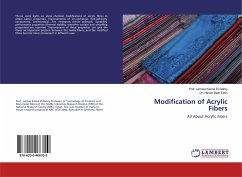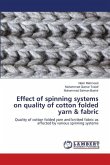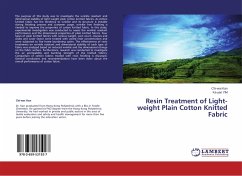Cotton is one of the most commonly used fibers for textiles, as most apparels are made of cotton. However, cotton fabric normally has shrinkage and wrinkling problems, degrading its aesthetic value. Resin finish is applied to improve the wrinkle problem of cotton fabric. Conventionally, cotton is dyed first, then finished with a cross linking agent (or finished after bleaching to be sold in white) to obtain the desired color and crease recovery properties. If the two steps could be merged, significant savings in energy, water, labor, and machine occupation time would be achieved. Since the 1950s, many researchers have attempted to combine dyeing and resin finishing processes into one step. However, a commercially viable combined dyeing and resin finishing process has not been reported. The main challenge has been producing treated fabrics that have deep shades, good fastness properties, and excellent crease recovery performance simultaneously.








